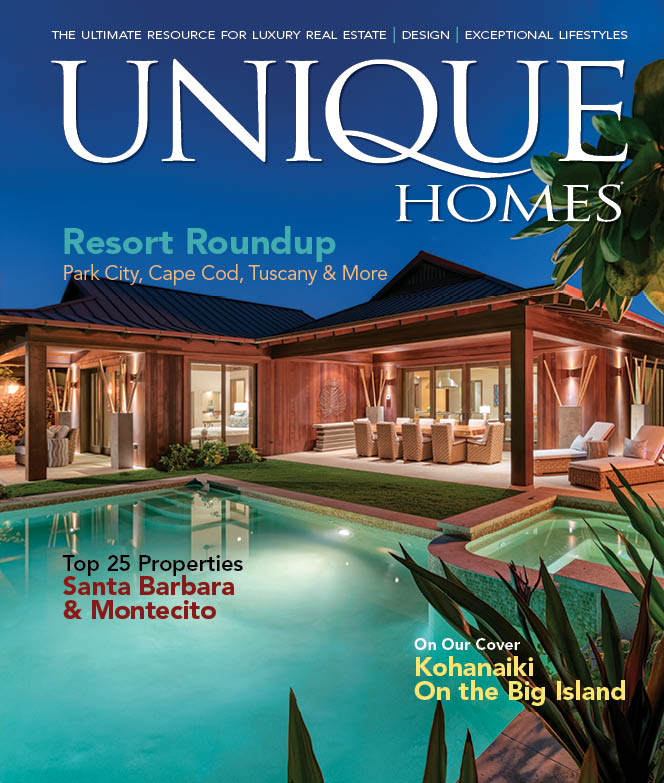
President and Principal Scott Lee Shares Insight on Hospitality, Residential and Mixed-Use Design Trends for the Year Ahead.
San Francisco-based SB Architects, one of the country’s leading hospitality and mixed-use design firms, continues to be on the forefront of trends in its areas of expertise, which increasingly includes large-scale multi-family and estate home projects.
Following the success of 2017 with several milestone projects completed, SB Architects President and Principal Scott Lee is looking ahead at what’s to come.
Along with a the team of experts, Lee has identified the below trends through the firm’s direct application and work within the mixed-use realm, luxury hospitality, custom and resort residential and the wine country.
Luxury Hospitality
Hyper-personalized, bespoke, immersive experiences — The next generation of hospitality consists of providing exclusive experiential journeys to bond and grow with clientele. SB values the club-like spaces at their hospitality projects, as they appeal to various lifestyle categories and behaviors, allowing people to come together based on brand affiliation. Personalized connectivity before, during and after the experience drives loyalty to engage the traveler throughout the entire journey and throughout the entire year.
Learning is the new luxury — Experiential travel is not a new trend. In 2018, the concept will continue to evolve, as travelers are looking to take experiences and newfound knowledge home with them. The execution of immersive travel has shifted into educational, allowing guests to become a part of the local culture and community, allowing them to learn a new sport, skill or craft.
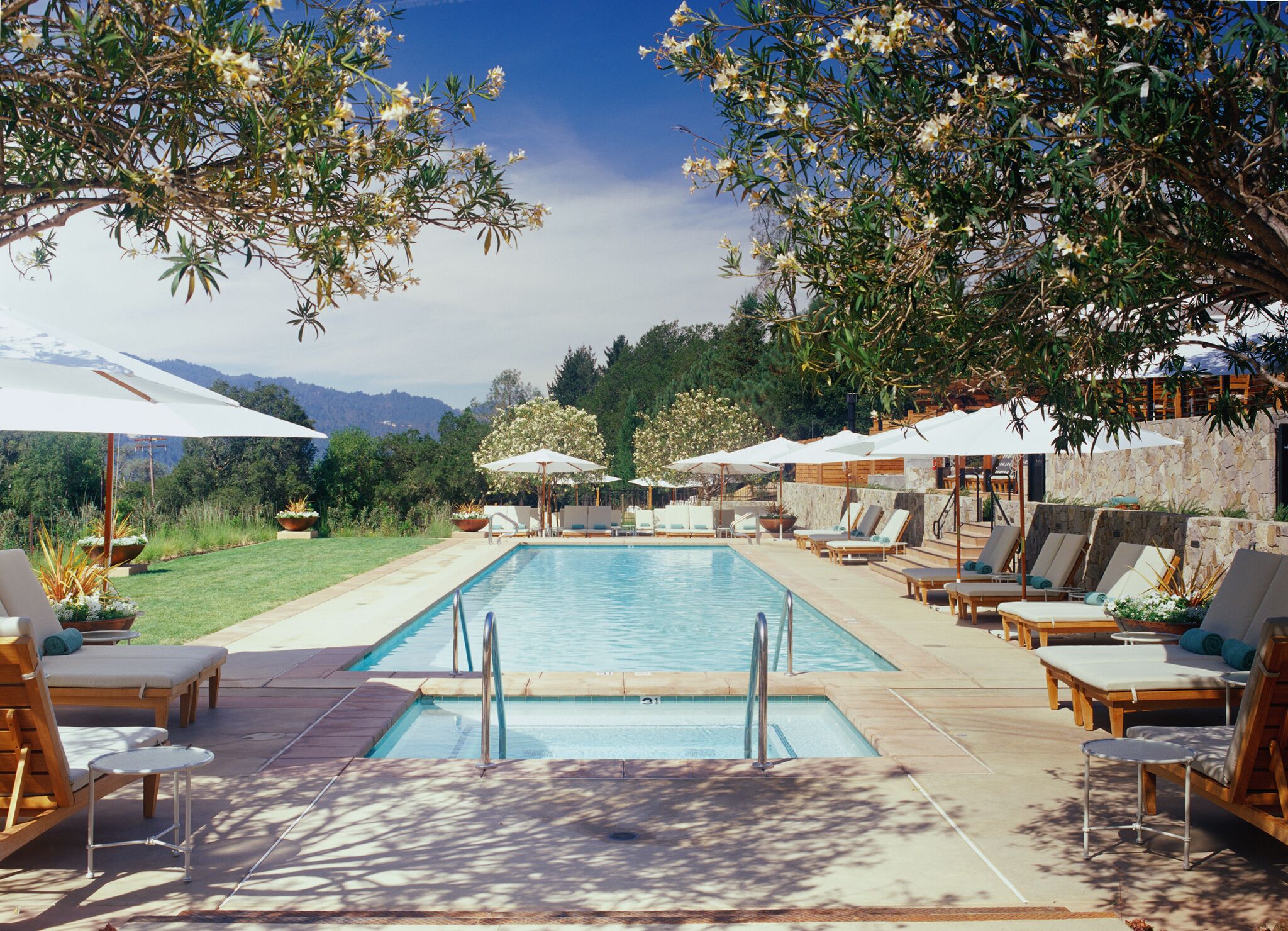
The Lodges at Calistoga Ranch, an Auberge Resort prove that resort residential is on the rise. Photo courtesy of Tim Street Porter.
“Travelers and homeowners are increasingly seeking out experiences that fulfill a higher need — something that emotionally connects a person to place. What we are seeing is a demand for authenticity across our core verticals as it relates to the local community. This in turn is impacting the way we design our projects across the board.” — SB Architects President and Principal Scott Lee.
Wine Country
Relax and un-wine — Modern day wineries are shifting from the traditional wine country architecture and layout. These days architects are designing lounge and workshop spaces, which allow guests to be engaged and entertained in an interactive platform with one another and the winery staff. The design emphasizes the grape to glass experience, and less on the tasting room. SB’s wine practice is dedicated to producing spaces where site sensitivity, structure and nuance are favored above all else.
Come for the wine, stay for the night — Modernized, sophisticated hospitality offerings in wine country have been few and far between, leading many visitors to travel for day trips from surrounding Bay Area cities. However, just within the last year, architects and designers have started to evolve the lodging offerings to reveal contemporary vino-cultured sanctuaries.
Residential
Resort residential is on the rise — The branded real estate category has seen tremendous growth in the past three years. These luxury developments truly blur the lines between resort and residential living, tying in the natural surroundings to create an authentic experience for buyers. Members and guests have started to value authenticity, a sense of belonging and community of a place over singular experience, and for this reason, branded residences have begun to flourish.
Green is (still) the way to go — Sustainability continues to be top-of-mind for homeowners, and with custom homes, designers are going above and beyond to minimize owners’ carbon footprint without sacrificing beauty.
Bringing the outdoors in — The rising demand for transitional indoor/outdoor space in custom homes is steadily increasing, and nature is having a serious moment in design. Reclaimed wood panel installations, exposed concrete flooring, biophilic architectural elements, and the incorporation of natural flora patterns in fabrics and artwork are all becoming more prominent.
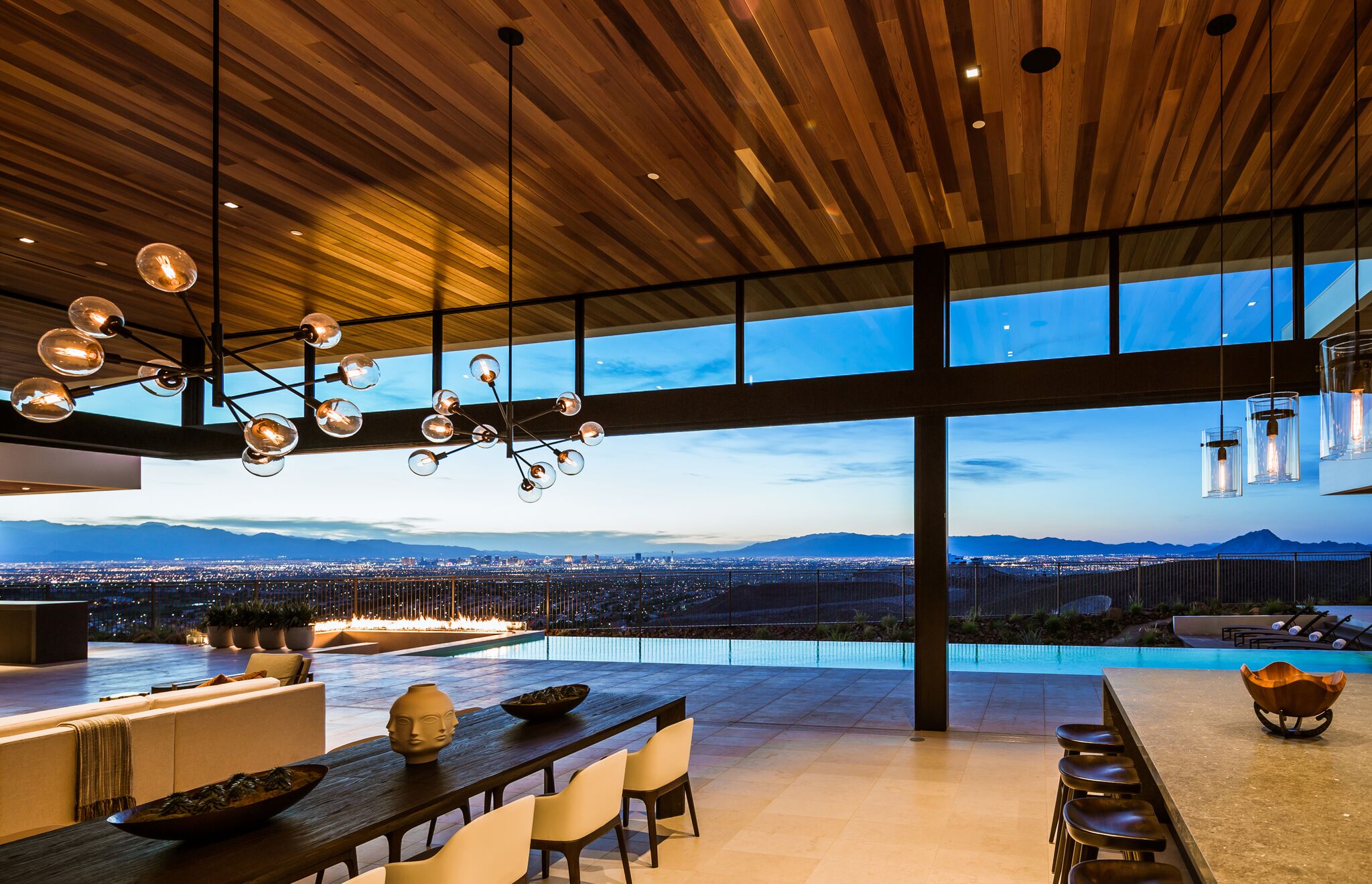
SB’s work with Ascaya in Henderson, Nevada is a reflection of the blurred lines between inside and out, with expanses of glass which disappear to create numerous arrangements of the flexible space. Photo Credit Ciro Coelho Photography.

Lee creates seamless transition between indoor/outdoor living at The Hillside House residence in Mill Valley, California. Photo courtesy of SB Architects
Mixed-Use
Integrated urban spaces — The secret to successful mixed-use communities lies in the connectivity and interrelationship between the ground floor retail, the residents who call it home, the office workers who frequent it daily and the hotel guests whose experience is enhanced. It is purely design that choreographs this unique experience.
Finding art in architecture — The lines continue to blur between art and architecture. Many new mixed-use developments are getting creative with art integration, such as SB’s work with the Miami Design District, in which SB has collaborated with six leading architects to design various buildings and their striking facades. SB created the architectural skeleton for the blocks, addressing building structure, overall identity and the movement of people through the space. Within this framework, each store has been treated as a distinct building, with individual retailer given the opportunity to create the entire façade — 45 feet from ground to sky.
Increasingly, real estate developers are placing value on contemporary architecture.
By Camilla McLaughlin
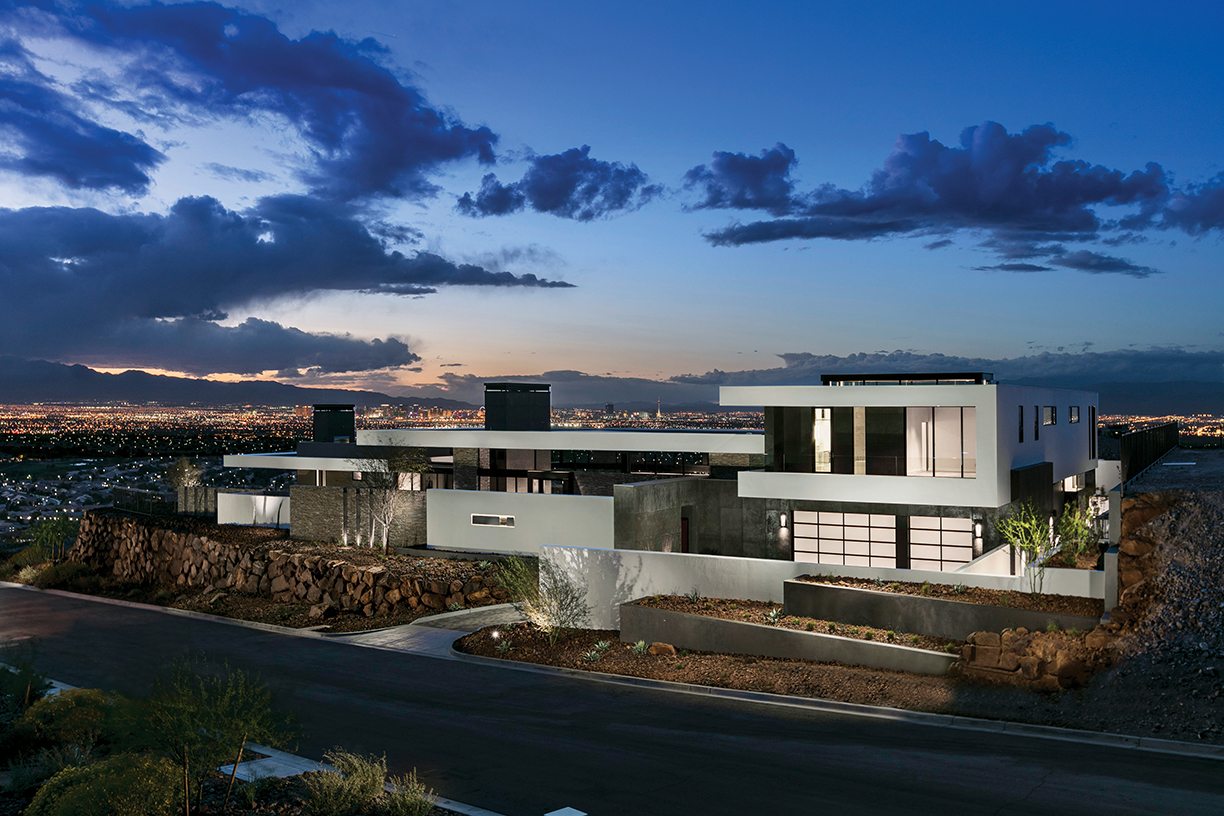
For years, innovative designs from starchitects have been the focus for new buildings in New York and Miami. Now, developers of single family communities are employing the same approach with developments and communities organized around a single architectural style. In some instances, notable architects are also on board to create a statement as bold as those broadcast by dramatic urban towers. In others, the architectural vision builds on research into consumer priorities. In every instance, the architecture is taking prominence.
In Nevada, the premise for a new ultra luxury development, Ascaya, is a specific architectural style, in this instance contemporary and specifically Desert Contemporary. It’s a vernacular characteristic of the Southwest and especially fitting for a project located in the foothills above Henderson, nine miles south of Las Vegas. Six notable architects have been commissioned to bring unique expressions of desert contemporary architecture to fruition. The designs are visionary, offering varied takes on the aesthetic combined with innovative construction, energy-efficient features and floor plans that align with lifestyle aspirations. Two inspiration homes are finished, three are under construction and a design from Pritzker winner Richard Meir & Partners is nearing completion.
A new community in Palm Springs, Linea, takes a cue from the area’s legendary modernist ties, offering fresh interpretations of the iconic style. Residences here appear as works of art rather than manifestations of an architectural style. For this project, developer Andrew Adler and architect Anthony Poon drew inspiration from abstract sculptures and Bauhaus painters. Homes rise as white cubist forms against the craggy backdrop of surrounding mountains. Stark white facades punctuated with soft hued doors, sculpted massing and a linear composition offer a fresh new take that pushes the modern aesthetic to a new level of expression.
Located on a terraced hillside setting in Henderson, Nevada is Axis, a new community developed by Pardee Homes, a member of the Tri Pointe Group, offering designs with elevations that are as much contemporary as they are transitional with modern floor plans. The architecture is forward-looking. The homes in Axis also integrate outdoor courtyards, balconies and rooftop decks in ways that transcend typical limitation of indoors versus outdoors. Strada, another new community, is geared toward millennials with its own individual architectural expression that grew out of consumer research of this demographic.
Ten years ago, it was difficult to build a contemporary home, except for Modern Tuscan, in Las Vegas unless it was on an individual lot outside of a development. The Ridges was the first to allow contemporary architecture and another recent development, The Summit in Summerlin, also leans toward contemporary.
“There is definitely a move in the direction of contemporary, and it’s started to come down to the higher-end, semi-custom tract homes. That’s had a big push. It hasn’t really come down to the starter home, yet. That’s the next wave,” says Eric Strain, CEO of Assemblage Studio and an architecture professor at the University of Nevada, Las Vegas.
For the first inspiration home at Ascaya, completed this spring, SB Architects drew on its experience with resort and hospitality properties and approached the home as a smaller scale resort. “We see a lot of crossover with private estates wanting more resort amenities, and hotels yearning to feel more intimate,” says Matt Page, LEED AP, vice president at SB Architects.
The home presents as a well-orchestrated composition of simple massing and long horizontal planes. The impression is one of balance, symmetry and subtle elegance. A series of clerestory windows add to the sense that the roof seems to float above the structure. Private-entry courtyards transition to a generous great room and kitchen that take in dynamic vistas of the Las Vegas Strip extending across the valley to distant peaks. Expanses of glass and telescoping walls and doors make inside and outside appear as a single space, incorporating the desert setting into the experience. Extensive decks and patios are augmented by a roof deck with a fireplace. Also accessed from a private sitting area tucked behind the great room, it becomes a privileged escape to watch the west’s technicolor displays at sunset.
Flexible spaces enable the home to be eminently adaptable to a variety of settings and experiences. The connectivity among different rooms and areas of the home is striking. Textural elements and extensive use of warm woods tame the volume, so even a solitary visitor sitting in front of the fireplace does not feel overwhelmed. According to Page, such chemistry doesn’t happen by accident. Instead, it’s the result of thoughtful design, which begins with the site and then filters down to the smaller architectural details.
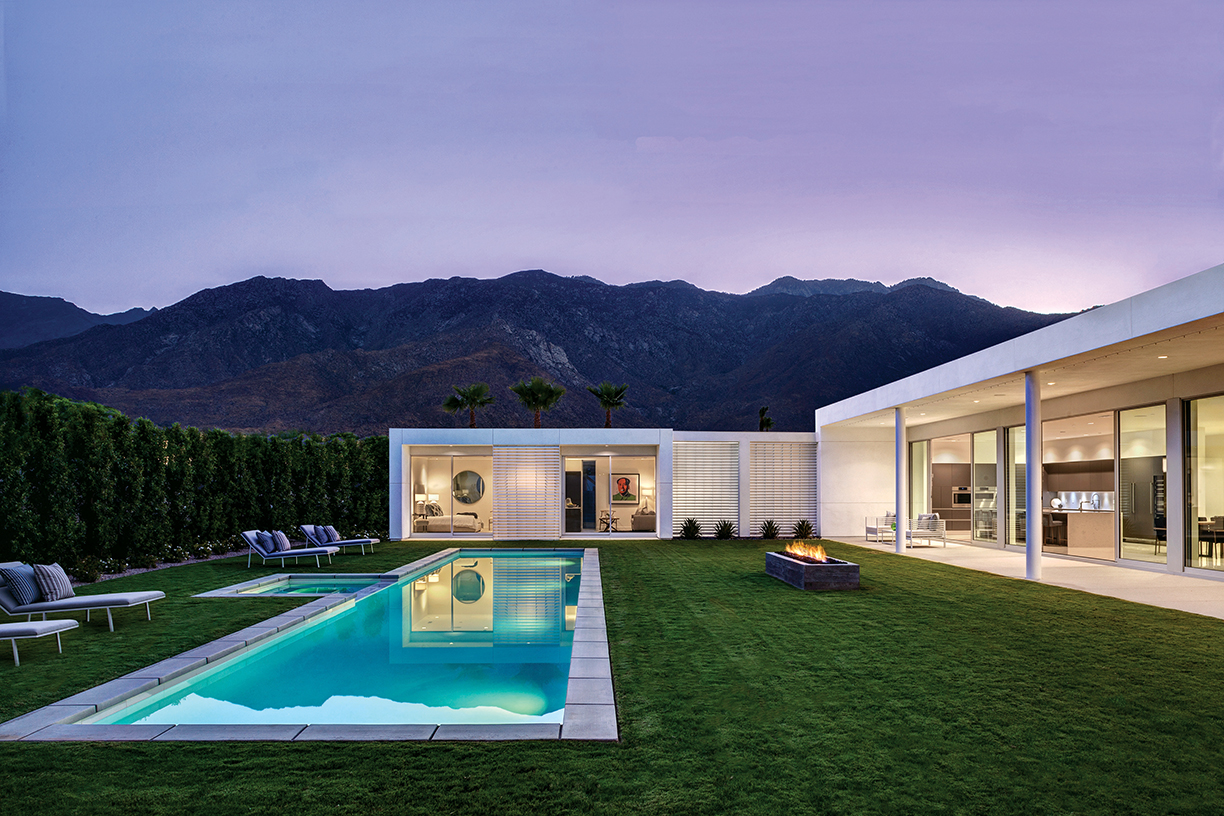
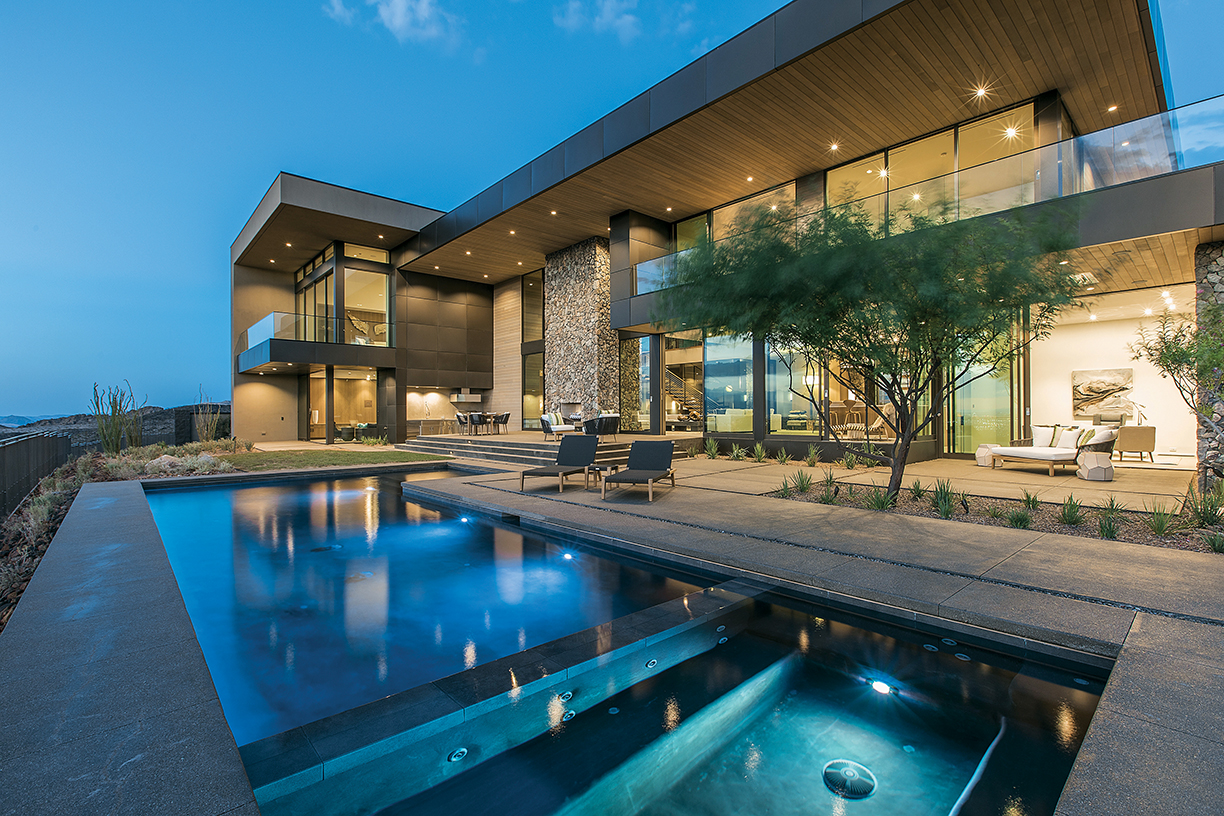
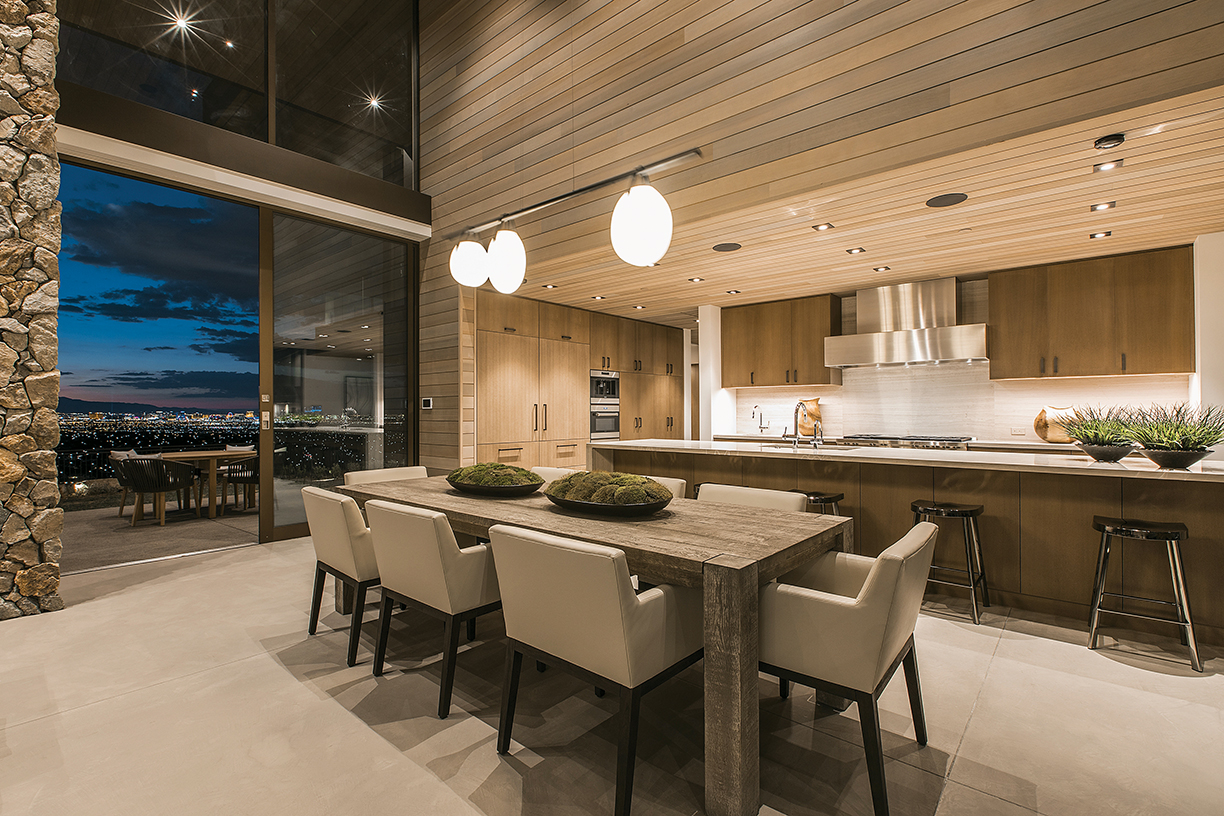
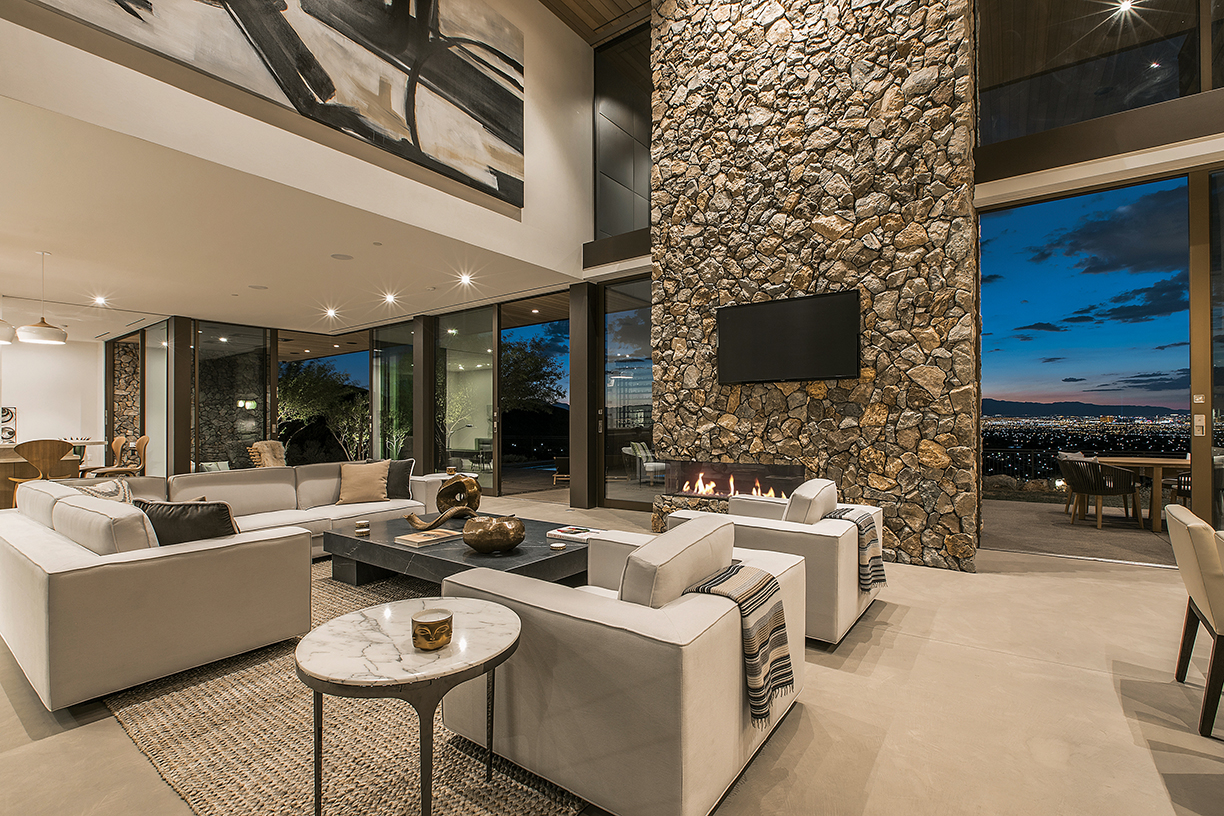
Photos courtesy of Shay Vilich photographer / Shapiro & Sher Group / Berkshire Hathaway HomeServices Nevada Properties and David Blank
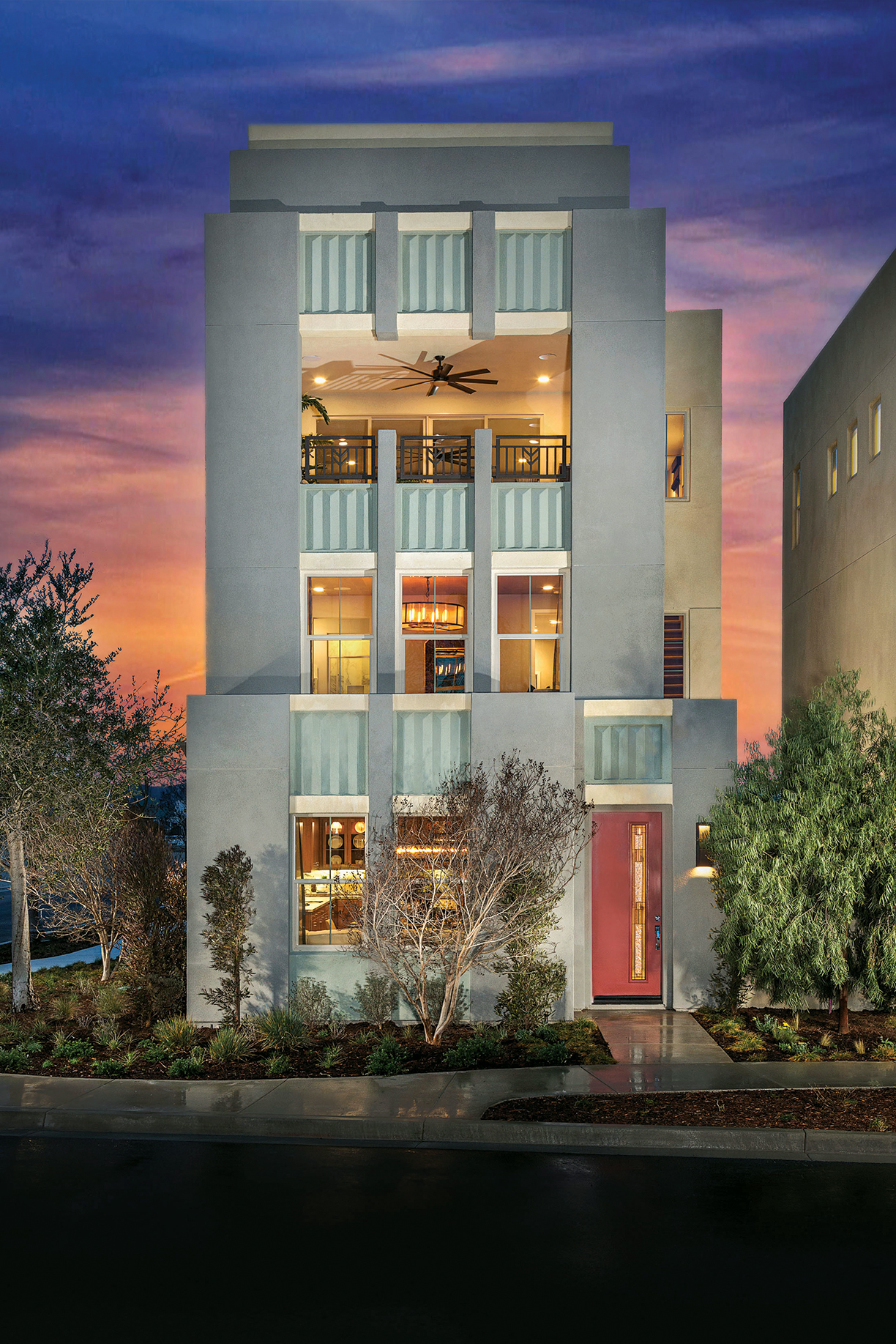
A new take on Mid-Century Modern, Carlisle at Parasol Park in Irvine, California.
A second inspiration home, orchestrated by Marmol Radziner, a design-build firm based in Los Angeles, was completed this summer. A green roof frames the entry, which is shielded from the street. Architects paired bronze anodized aluminum panels, vertical grain western red cedar and local natural stone with warm and rustic materials and color palettes to reflect the desert landscape.
Sustainability is part of the Modern vision. The home designed by Hoogland Architecture, the only local firmed tapped to design an inspiration home, incorporates passive strategies such as deep overhangs oriented to the solar patterns of the site and aggressive day lighting. Even the infinity pool is incorporated as a design element and reflects the lights of the city at night.
Another home, created by the firm Lake/Flato, employs rammed earth walls, which anchor and blend the structure into the surrounding terrain as well as insulate against Nevada’s intense heat. The construction is aligned with the firm’s belief that design and sustainability are inseparable, part of a place-based approach that merges the building with the surrounding landscape.
Also opening in July was the resort’s $25 million clubhouse designed by the Scottsdale firm, Swaback Partners. A dramatic copper-covered porte cochere previews a building that melds stone, copper, glass and artwork into venue in which the architecture energizes as much as the activities.
From high-end enclaves intended for a rarified echelon to communities that appeal to a wider demographic, architecture is becoming much-desired eye candy.
Photo courtesy of Jim Doyle, Applied Photography LLC


